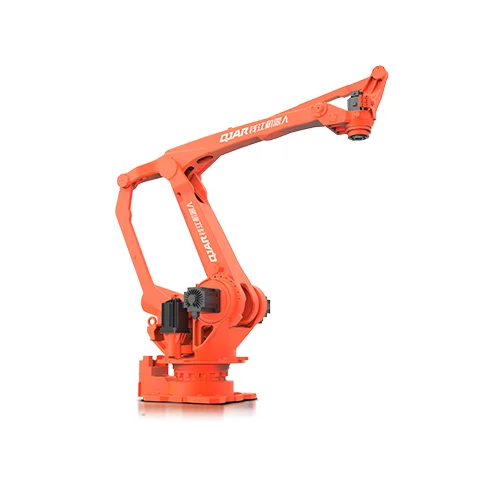Introduction
Primarily as a result of automation, the manufacturing sector is presently experiencing a revolutionary crisis. This paradigm shift is predicated upon two revolutionary technologies. Assemblies and laser welding robots are the terms for these technologies. Also, these innovations are generating a revolution in product development and are redefining standards for efficiency and accuracy in manufacturing.
The Rise of Laser Welding Robots in Manufacturing
Due to the integration of laser welding robots within the manufacturing industry, a fundamental transformation has taken place. Sectors of the economy that necessitate the execution of precise welding operations have come to rely on these devices, loaded with the most cutting-edge laser technology.
Introducing the QJR6-2000H
A prime example of such innovation is the “6KG Payload 2014mm Reaching Distance 6 Axis Welding Robot QJR6-2000H.” This state-of-the-art laser welding robot boasts a gear gaps adjustment structure for improved joint accuracy and a hollow wrist U-shaped structure for enhanced support stiffness and flexibility. Additionally, its special noise reduction patent significantly reduces operating noise, making it ideal for various manufacturing environments.

Technical Brilliance of QJR6-2000H
The QJR6-2000H excels in technical capabilities. With a repeat positioning accuracy of ±0.08mm and an impressive armspan of 2014mm, it can precisely weld materials like carbon steel, stainless steel, aluminum, and copper. This robot is a testament to the advancements in laser welding robots, offering unmatched precision and flexibility.
Enhancing Precision with Advanced Laser Welding Robots
Laser welding robots, such as the QJR6-2000H, are pivotal in enhancing manufacturing precision. Their ability to perform complex welding tasks with high accuracy and speed is unparalleled. The QJR6-2000H, with its wide motion range and high-speed operation, epitomizes the evolution of welding technology in the era of automation.
The Emergence of Assembly Robots in Diverse Industries
Concurrent with the proliferation of laser welding robots across diverse sectors, the advent of assembly robots ensued. Assemblies including palletizing, selecting, packaging, handling, feeding, and unloading are being transformed by these robots.
Introducing the QJRB180-1
The “180kg Payload 3153mm Reaching Distance Robotic Arm QJRB180-1” exemplifies the capabilities of modern assembly robots. Designed for high-speed and stable operation, this robotic arm is versatile in its applications. It can be employed in industries like furniture, food and beverage, and 3C for high-precision palletizing and handling tasks.

Case Study 1: Laser Welding Robot in Action
In a practical application, the QJR6-3 welding robot, a variant with a 2 meters reach distance, demonstrates the efficiency and versatility of laser welding robots. This system, equipped with low spattering robotic welding power source and pneumatic finished product elevating rods, shows a remarkable ability to adapt to different frame sizes. The robot’s capacity for inner side welding and its compatibility with various welding sources highlight the adaptability of laser welding robots in modern manufacturing.
Case Study 2: Assembly Robots Boosting Efficiency
A compelling example of assembly robots in action is their use in a lithium battery assembly line, where 20 units of QJAR robots significantly enhanced the production process. These assembly robots were instrumental in tasks like assembling, gluing, and handling. The result was a notable reduction in manpower and costs, coupled with a substantial increase in output. This case study exemplifies the profound impact that assembly robots can have on manufacturing efficiency.
The Synergy of Laser Welding and Assembly Robots
A synergistic effect is produced when laser welding robots and assembly robots are utilised in tandem, which substantially improves manufacturing processes. A laser welding robot such as the QJR6-2000H revolutionises welding operations with its exceptional accuracy and velocity. Conversely, assembly robots like the QJRB180-1 optimise the processes of handling and assembling. Collectively, they constitute a formidable pair capable of efficiently and effectively addressing intricate manufacturing challenges.
Conclusion
The advent of assembly robots and laser welding robots integrating signifies a paradigm shift in the manufacturing sector. These technologies are not merely implements; rather, they portend a future in manufacturing that is more streamlined, accurate, and economical. Undoubtedly, as the manufacturing sector progresses, the function of these machines will broaden, resulting in additional revolutions within the manufacturing domain and the establishment of fresh standards for output excellence and efficacy.
In summary, laser welding robots and assembly robots transcend their status as mere automation components and serve as catalysts for the advancement of the manufacturing sector. The persistent progress and seamless integration of these technologies hold the potential to unveil further industrial revolutions characterised by unparalleled efficiency and ingenuity.
